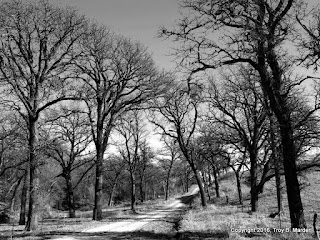Just a quick post--mostly pictures--of a recent trip that I took home to Kansas. After speaking in Kansas City, I spent a couple of days with my parents and managed to get out with the camera a time or two. I love sharing the back roads and Kansas has plenty of them to discover!
 |
| A sepia tone version of the old grain elevator at Lasita, Kansas. Now a ghost town, Lasita was once an important stop on the LK&W Railroad. |
 |
| Looking out across the prairie, trees were always an indication that fresh water--a river, creek, stream, or spring, was nearby. Cottonwoods, in particular, were indicators of fresh water. |
 |
| Watercress (with the round leaves) is an edible green that only grows in the freshest, cleanest water sources. You'll rarely, if ever, find it growing in a sluggish, muddy stream. It is always in the cleanest, clearest streams and springs. Here, it grows with a tiny species of Equisetum, also known as horsetail or scouring rush. |
 |
| The water in this spring is so clean! Everything in the photograph is underwater, even though it looks like the upper portion of the photo may be the creek bank. I assure you it's not! |
 |
| There are no trees I love more than these big, old burr oaks that have been standing on the prairie for a century or more (some of them two centuries, easily). |
 |
| These old back roads are the roads of my childhood, where we would go fishing, exploring, or just out for a Sunday drive. There were many Sunday afternoons spent on these old roads with my grandfather. |
 |
| Pillsbury Crossing, near Manhattan, KS, was a flat, shallow, stone ledge in the river where, unless it had just rained, the water ran only 3 or 4 inches deep over the rock. It was a very popular crossing for wagon trains as the settlers expanded westward across the prairie. |






